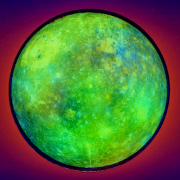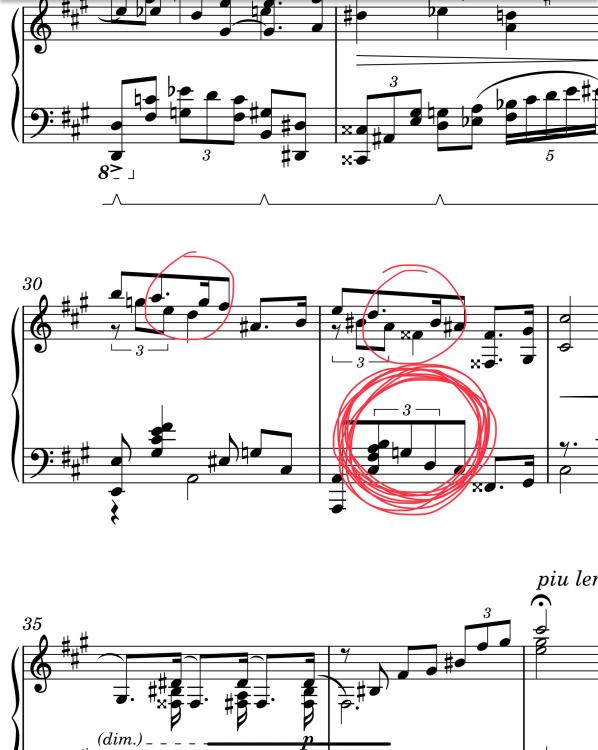-
Posts
110 -
Joined
About mercurypickles

Profile Information
-
Biography
Evan Sercombe (b. 2005) is a composer and vocalist currently enrolled at the Eastman School of Music in Rochester, NY. They have been a member of the Madison Youth Choirs, the Wisconsin State Honors Choir and created the role of Samuel Sewell in the premiere of Bill Banfield's "Edmonia".
They have studied under various composers, most importantly Dr. Cynthia Van Maanen and Scott Gendel.
Their music spans from art song to large-scale chamber and orchestral works. Major compositional influences include Béla Bartok, Gustav Mahler, Lili Boulanger and Samuel Barber. Primarily a neoclassicist, their current music is marked by an expressive intensity and lyric grace.
Recent compositions include the choral work "...when language fails", an anti-war piece setting the poetry of Sara Teasdale, and a symphony in d minor, as well as a variety of short pieces for various instruments/ensembles. -
Gender
NA
-
Interests
Composition, hiking, history, painting, politics
-
Favorite Composers
Mahler, (Lili) Boulanger, Bruckner, Ives, Schubert, Barber, Vaughan Williams, (Richard) Strauss, Faure
-
My Compositional Styles
Modern, Neo-romantic, Post-impressionist
-
Notation Software/Sequencers
Musescore
-
Instruments Played
Tenor (voice), Piano, Saxophone
Recent Profile Visitors
mercurypickles's Achievements
-

Simple piece for Halloween - "The Witches' Canon"
mercurypickles replied to mercurypickles's topic in Choral, Vocal
Hello! I’ve sent a message your way -

3 movements from my new piece - Partita
mercurypickles replied to mercurypickles's topic in Piano Music, Solo Keyboard
@PeterthePapercomPoser Thank you so much for your reply! If I can get better recordings of these pieces I’ll send them, that aside: - I think you’re right about the “wacky/quirky” quality to this “Danse.” I certainly don’t think it could be called anything else. It was actually meant as an homage to Poulenc, something shared throughout the set. This whole partita is more or less a tribute to Les Six (and to a lesser extent, Ravel). When I hear this piece, though, I start to imagine one of the evil muppets (like Animal, or the bomb guy) just staring at you. Bare eye contact. No looking away. Just that muppet, and this music is the illustration of that moment. (The italian tempo/expressive indication literally translates to “Fast and a little bit evil.”) - This truly is the fault of poor audio rendering. When played on an actual instrument, even my fairly poor keyboard skills yielded interesting results. This is a very personal piece. There have been some difficult things going on around me and I needed an outlet. For a long time I’ve had something of a block when it comes to just creating music out of emotion; I always create in abstraction, or at least, tend to. That’s been breaking down a little bit recently, and this was the product of it. It was the first piece completed in the set. - This Pavane is a revision of a much earlier piece. It was in my first year of composing, I joined this forum and this was one of my “Nocturnes” (I have not written any nocturnes I would consider part of my works, aside from a secret project I may reveal later). Anyway, it was very repetitive, and dull. The former quality was kept in this piece, but reworked with a more mature understanding of counterpoint and rhythmic theory. Honestly, I consider this to be nothing more than a real, true-to-vision version of that little piano piece. I just didn’t have the technique to write it the way I wanted to back then. -
mercurypickles started following Der Tod, das ist die kühle Nacht - High voice and piano , 3 movements from my new piece - Partita , Zwei Wandrers Nachtlieder and 2 others
-
Hi all! These are the three inner movements of my new piano partita. There is also an introductory movement and a final, stylized gigue. I had some difficulties in exporting a MIDI rendering for those two movements, so they are not included here. There are strong thematic and sectional connections across each movement, so they do make a little less sense this way than they would in full context. Just bear that in mind while listening. I'd love any thoughts on the music, the piece is for a good friend of mine and I'd like to give it to them in tip-top shape! PARTITA 2-4.pdf
-
Here are two songs for voice I wrote back in February. These are pieces I wrote shortly after a break to composition, I was too busy to write anything for most of last semester. They are a setting of Goethe's two "Wandrers Nachtlied" poems, famously set by Schubert and Liszt among others. I wrote this pair of songs on/around Valentine's Day, I had a lot on my mind and these were the output of that. I'll be performing them myself relatively soon, as will a friend of mine, and I will post a real recording soon. In the mean time, enjoy the MIDI 😝 Let me know your thoughts!
-
Hi all! Been a while since I posted again as I've been extremely busy with both school and my writing. I'll be slowly uploading some of the pieces I've been working on over the last few months as we head on toward the summer. I hope to be much more active here over the coming months, as I'll have more time to engage with a community such as this. Anyway, this is a sonata I more or less began on a whim back in March. It is dedicated to my childhood piano and voice teacher, a close personal friend as well as someone who shaped my musicianship. She is the person that encouraged my earliest efforts at composition, so it only seems right that my first keyboard piece in a few years (and by far my largest-scale keyboard piece) should acknowledge her influence and friendship. Eventually I do hope to get an actual recording of this piece made because I'm really proud of it, and if that comes to fruition I will gladly share it here. The piece is cast in a single movement. While I have written single movement freestanding pieces, this is my first completed attempt at a fully functional sonata form movement. Additionally, this piece is also my longest single piece of continuous music (my symphony is longer but it is in three movements). I decided to write the piece after an intensive study of Beethoven's sonata forms in my first year of conservatory, using the sonata theory developed by Hepokoski and Darcy. I will not get into a full analysis of my own piece as I generally try to avoid picking apart my own works, but the general outline (including the tonal structure) is as follows: Exposition: Off-tonic (B major) introductury passage Split into a few sub-sections First subject (E major) - cheery march with some crunchy dissonance Split in two parts - first in E major, second in A-flat Transition Second subject (c-sharp minor) - lilting theme, pastoral and gently sighing Closing material (c-sharp minor) - a few ostinati form the backbone of this passage Development: Restatement of opening transposed (D-flat major) Fragments of first subject mixed with motive from introduction (B major at first) Central episode (pantonal) - this part of the piece uses a technique called tempo fugue. The term was invented by György Ligeti to describe multiple simultaneous rhythmic layers consisting of statements of a fixed amount of musical material. Essentially, a fugue that takes place in rhythm and time instead of tonal harmony. My implementation here is personal, and the "fugue subject" is based on the second subject. Episode based on transitional material (B-flat major, furthest point of tonal distance from the root of the piece) - primarily serves as a segue from the tempo fugue and the following march music March passage (B-flat major) - taking advantage of the expressive and structural effect of being as far from the tonic of the piece without going fully atonal/pantonal, a new theme emerges out of texture from the exposition's closing material Grand build-up to recapitulation (modulatory) - pulls on a somewhat hidden tune that was stated much earlier in the piece (bonus points to whoever finds it!). Features substantially flashier keyboard writing, which I am now struggling to learn (lol) Recapitulation: First subject (just first part, E major - e minor) Transition (e minor) - more bonus points to whoever figures out what the new material here is Second subject (e minor) Closing material/first subject pt.2 (E major) - the second half of the first subject is worked together with the closing material from the exposition, leading to a lush half cadence Coda (E major): Order of sub-sections changed to reflect more effective pacing for this part of the piece. There are a few critical motives that undergird the whole of this really almost over-wrought structure, but they will go unmentioned and I would discourage any serious attempts to try and find connections that may or may not exist. Happy listening!
-

Intonent Hodie - 4 carols for choir
mercurypickles replied to mercurypickles's topic in Choral, Vocal
Thank you for listening! The reason why I switched it to piano was because the choral sounds in musescore couldn’t play back the music. I’d post a sample here, but I don’t want to make your ears bleed. 😂 -
Hello! Here's my entry for this year.
- 18 replies
-
- christmas
- competition
-
(and 1 more)
Tagged with:
-
Hi all! This is my entry for the christmas event, though it is a bit late. I figured since it's not the new year yet that it wasn't quite too late! Notes on the piece are in the pdf. Apologies, as always, for the midi playback. This time, particularly, in the final movement, which I had to change the midi instruments to piano in the middle section. Regardless, let me know what you think!
-
Hi all! This is my setting of the Heine poem, "Der Tod, das ist die kühle Nacht." This poem was set by Johannes Brahms in 1884, included in his Op.96. I decided to set this poem during my first semester of college, studying vocal performance, because I was assigned Brahms' setting of the text but wasn't satisfied with his take on it (sacrilegious as that is). The playback isn't the best, seeing as it's just a MIDI export from musescore, but I'm going to try and record it myself when I get a chance. I hope you enjoy! Der Tod, das ist die kühle Nacht.mp3
-
This piece is very nice, it is very dramatic and expressive, but the engraving needs some work. Make sure you do not beam over beat groupings unnecessarily, like in the attached screenshot. You would also do well to avoid putting tempo indications at the ends of systems, which occurs repeatedly.
-

Symphony in d minor
mercurypickles replied to mercurypickles's topic in Orchestral and Large Ensemble
I've made some revisions to the first movement, clarifying the orchestration and form to hopefully make what the movement is striving for a bit clearer. @PeterthePapercomPoser let me know what you think! -

Symphony in d minor
mercurypickles replied to mercurypickles's topic in Orchestral and Large Ensemble
Please forgive me for being a bit defensive! It can be difficult not to leap to die for my choices when I feel I’ve done something right, but like I said, there is different art for different people, and I greatly respect and appreciate your following up. This is my favorite movement in the piece! I’m so glad it came across well for you, I’ve had some very mixed reactions to that movement because of the rather unusual form. (Ternary and sonata form superimposed with the sonata form layer have a reversed recapitulation.) Yes they are! I’m aware and I need to fix them but I haven’t quite figured it out yet - if you have any suggestions I’d love to hear them. -

Symphony in d minor
mercurypickles replied to mercurypickles's topic in Orchestral and Large Ensemble
Thank you for taking the time to listen and leave a comment! All I have to say about this is that I feel you’ve missed the point of the movement. Yes, it is rather abstract, and that is by design. This movement was originally written as a contrapuntal exercise which simply grew into something more. As such, it simply doesn’t rely on traditional melodic mechanisms or standard-fare romantic period harmonic structures. In many ways this piece has much more in common with renaissance counterpoint than most other symphonic music I’ve come across. If you’re looking for a “big tune” try listening to the finale, though if you consider this first movement incomprehensible then you may have a difficult time understanding the form of the finale. As for the accusation of, “indiscriminately entering notes into the sequencer,” I take some frustration. You do not know my process, so why insist on saying something so blatantly polemical? I fail to see the value in repeatedly saying things like that, as well as calling the music “a-thematic.” For your information, this movement took me nearly 8 months to complete, it was a tremendous amount of work, and I don’t take what seems to be largely unjustified criticism lightly. If you don’t like a piece of music, that’s fine! There’s plenty of music by very famous composers that simply doesn’t speak to me that I largely find no value in. Not all art is for everyone, we all have different things we prefer over others and I would hate to be someone that would force you to listen to something you don’t enjoy! But with that said, find something more grounded in the score to criticize than something along the lines of, ‘well, it’s not Tchaikovsky and there’s not a big obvious melodic gesture so the composer must not know what they’re doing.” (Yes I realize that’s not word for word what you said, but it’s not exactly far off either.) Again, thank you for taking the time to listen, as well as giving me the opportunity to spell out my feelings toward critics. 😉 -

Symphony in d minor
mercurypickles replied to mercurypickles's topic in Orchestral and Large Ensemble
It’s interesting you brought this up. In the original quartet version of this piece they are half notes (or semibreves) at half the tempo, but they were too difficult to count and always sounded rushed. One of the fascinating things I’ve started to notice now that I’ve had performances of some of my music is that notation can have a profound effect on how performers interpret sheet music. As such, I chose to put it in breves for a more expansive quality. As for the string tutti/unis. issue, I’ve heard it go either way and honestly don’t care terribly about that detail. It’s easy enough to fix, so if someone convinces me strongly enough in the future I may change it. What did you think of the music in and of itself? -

Symphony in d minor
mercurypickles replied to mercurypickles's topic in Orchestral and Large Ensemble
Thank you for taking the time to listen and leave a comment! :-)


.thumb.png.8b5b433a341551e913a34392660bc95b.png)





